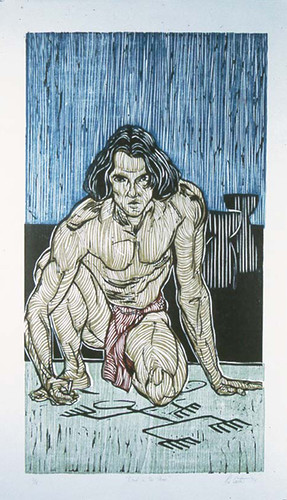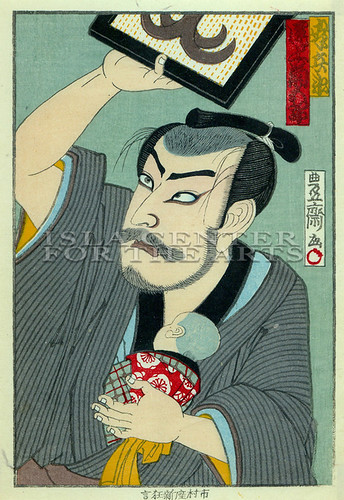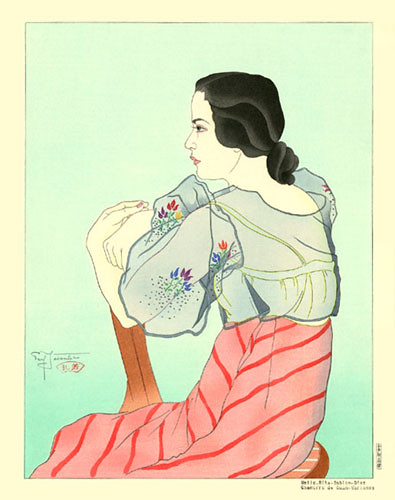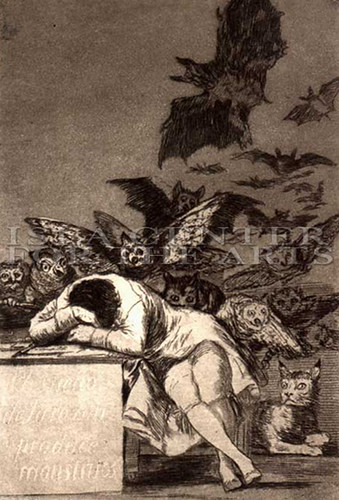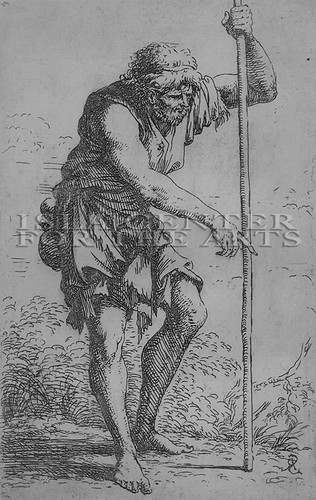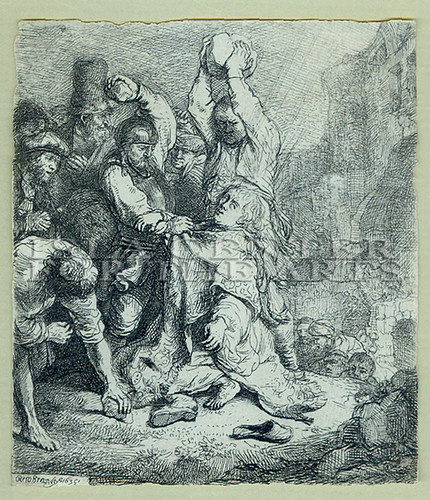Isla collection
Many private print collections on Guam center around authentic Japanese woodblocks including a sizable patronage of French artist Paul Jacoulet. Jacoulet worked out of Japan with master woodblock carver, Kazuo Yamagishi, in the early 1930s and created a body of work based on Pacific cultures, Korea and Japan. Some of his subject matters were Pacific island natives of Micronesia, which provided an affinity with many local collectors on Guam.
One of the most important public collections, by far, is held in the archives of the Isla Center for the Arts, located on the University of Guam campus in Mangilao. The gallery has prints acquired from private donations and re-strikes from the original plates include etchings by Rembrandt Harmenszoon van Rij and William Hogarth, woodcuts by Albrecht Durer and A. Malloil, engravings by William Blake, a lithograph by Honoré Daumier and a substantial body of aquatint prints by Spanish master painter Francisco Goya, including a complete suite of Los Caprichos.
Art form in its infancy
Contemporary printmaking on Guam is virtually in its infancy when it comes to local artists who consider it their primary medium of choice. Only a handful of artists are known for works on paper. Many of these artists, though their prints are in private Guam collections, no longer reside on island.
Some of Guam’s first printmakers came out of the University of Guam which introduced lithography, silkscreen, woodcut and intaglio to students and local artists alike. In the early 1970s, the University of Guam art faculty included Joe Kagle, Keith Gum, and Robert Sajnovsky. In contrast to their personal forte of painting and sculpture, each contributed to exposing the community to some of the earliest exhibits that established prints as an exclusive medium in and of itself. Another artist, Apolinar “Gabby” Medina, fresh from Parsons School of Design, returned to the island to show exquisite and highly detailed intaglio prints.
Intaglio is a family of printmaking techniques in which the image is cut into a surface or plate. Normally, copper or zinc plates are used. To print an intaglio plate, ink is applied to the surface and then rubbed with tarlatan cloth to remove the excess ink. The final smooth wipe is often done with newspaper, leaving ink only in the incisions. A damp piece of paper is placed on top and the plate and paper is run through a printing press that, through pressure, transfers the ink from the recesses of the plate to the paper.
Today the university continues to encourage the discipline of printmaking in all aspects to local art students through University of Guam Associate Professor Ric Castro, a painter who also produces works in the woodcut, intaglio, and mono-type mediums, and Phil Noble, a photography instructor at the university who also teaches intaglio printmaking. On his own, Noble has been able to merge traditional printmaking with modern digital imaging and continues to experiment by superimposing a combination of computer techniques that include photography, digital graphics and found imagery.
Although new crops of printmakers continue to emerge from on- and off-island, many artists have not gravitated to the discipline full-time. One local artist who has been able to make the transition successfully is Monica Baza who – ironically, may be considered more of an image-maker – established a following of collectors for her relief block prints while also remaining a prolific painter.
Baza’s woodcuts and linoleum prints capture the succinct sensibilities of island life and culture. Her graphic uses of pattern accentuate larger compositions that present a dialogue of mythological legends and stories. These images also take inspiration from the island’s cultural icons such as the latte (monolithic stone structures composed of a pillar and capstone) and other symbolic references Baza has adopted into her own unique visual vocabulary.
By Ric R. Castro, MFA
Associate Professor of Art, University of Guam
For further reading
Feldman, Jerome, and Donald H. Rubinstein. The Art of Micronesia: The University of Hawaii Art Gallery. Honolulu: University of Hawai’i Department of Art and Partners, 1986.
Flores, Judy. “Art and Identity in the Mariana Islands: Issues of Reconstructing an Ancient Past.” PhD thesis, University of East Anglia, 1999.
–––. “Paul Jacoulet’s Vision of Micronesia (review).” The Contemporary Pacific 20, no 2 (Fall 2008): 513-516.
Kihleng, Kimberlee S., and Nancy P. Pacheco, eds. Art and Culture of Micronesian Women. Mangilao: Isla Center for the Arts and Women & Gender Studies Program, University of Guam, 2000.
Spennemann, Dirk H.R., ed. “Paul Jacoulet: List of Prints.” Digital Micronesia–Marshall Islands–An Electronic Library and Archive, 2005.
University of Guam. “Isla Center for the Arts.”


